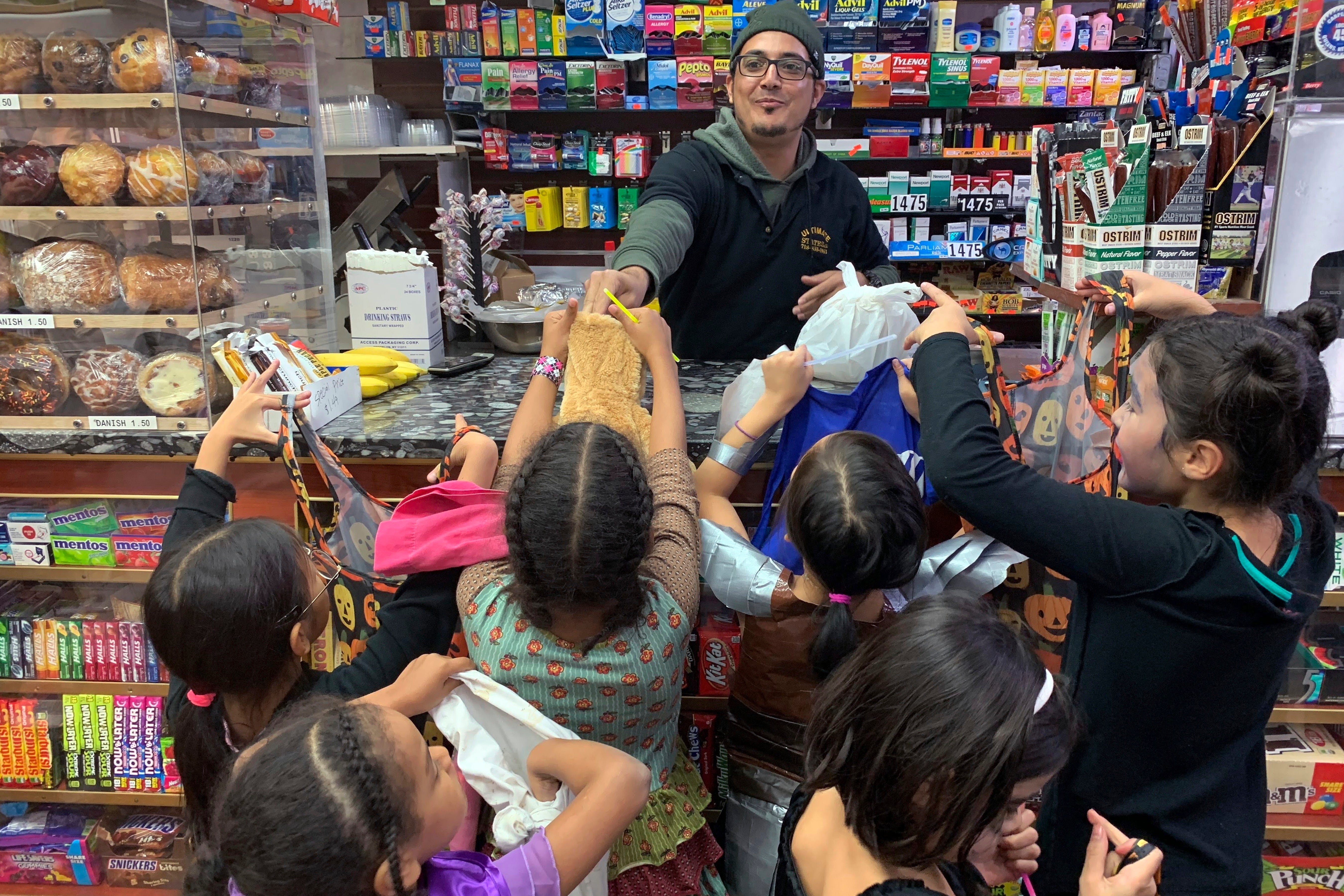Americans load up on candy, trick or treat - or not
Americans may not know if trick or treating will happen this year because of the pandemic, but they’re buying a lot of Halloween candy while they wait to find out

Your support helps us to tell the story
From reproductive rights to climate change to Big Tech, The Independent is on the ground when the story is developing. Whether it's investigating the financials of Elon Musk's pro-Trump PAC or producing our latest documentary, 'The A Word', which shines a light on the American women fighting for reproductive rights, we know how important it is to parse out the facts from the messaging.
At such a critical moment in US history, we need reporters on the ground. Your donation allows us to keep sending journalists to speak to both sides of the story.
The Independent is trusted by Americans across the entire political spectrum. And unlike many other quality news outlets, we choose not to lock Americans out of our reporting and analysis with paywalls. We believe quality journalism should be available to everyone, paid for by those who can afford it.
Your support makes all the difference.Americans may not know if trick or treating will happen this year because of the pandemic, but they’re buying a lot of Halloween candy while they wait to find out.
U.S. sales of Halloween candy were up 13% over last year in the month ending Sept. 6, according to data from market research firm IRI and the National Confectioners Association. That’s a bigger jump than the usual single-digit increases. Sales of Halloween chocolate alone are up 25%.
Earlier Halloween displays at some chains, like dollar stores, Meijer and ShopRite, likely helped boost sales. But Americans may also be in a mood to celebrate after months of pandemic anxiety.
Cassandra Ambrosius, who lives in central Wisconsin, was surprised to see bags of Halloween candy at the grocery in early September; her husband snapped one up. She expects to buy more bags as Halloween gets closer, because she thinks people in her neighborhood will figure out how to trick or treat safely.
“I’m sure people are just excited for a little sense of normalcy,” Ambrosius said.
That enthusiasm is good news for candy companies, which rely on the 10-week Halloween period for nearly 14% of their annual $36 billion in U.S. sales. Halloween is the biggest holiday of the year for candy makers, followed closely by Christmas and Easter. Valentine's Day is a distant fourth.
Ferrara Candy Co., which makes Brach’s Candy Corn, says it saw online demand three months earlier than usual. Some stores also asked Ferrara for earlier shipments.
But while early demand are strong, sales in late October could suffer if the coronavirus clamps down on trick or treat. Fifty-five percent of Mars Wrigley's Halloween candy sales usually happen in the last two weeks of October, says Tim LeBel, the company's chief Halloween officer and head of U.S. sales.
New York’s governor recently announced that he won’t ban trick or treating in the state. But some cities, like Springfield, Massachusetts, and Antigo, Wisconsin, have called it off. Big Halloween events at places like Disney World and Salem, Massachusetts aren’t happening.
Ben Reed, of Arlington, Texas, takes pride in giving out full-size candy bars for Halloween. He usually buys between 160 and 200 candy bars.
“This year I have no idea how many to purchase,” he said. “I do not want to disappoint the kids, but on the other hand, I do not want to be stuck with too many and add more COVID pounds to myself.”
Numerator, a market research firm, surveyed 2,000 consumers in early August and found that 52% planned to buy less candy this year than they usually do. Just 11% planned to buy more.
Candy companies have been making some changes to deal with all the uncertainty around Halloween. Hershey is selling fewer large Halloween-themed bags of candy and shifting more candy to smaller, everyday bags that can still be sold after the holiday, said Phil Stanley, Hershey’s global chief sales officer.
Mars is customizing bag sizes. A place like Los Angeles County, which is discouraging trick or treating, may get smaller bags, for example.
“We’re trying to cover all the bases because each market is going to celebrate a little bit differently,” LeBel said.
CVS Caremark says it’s reduced the number of large and giant bags of candy stores will receive. It’s also expanded its assortment of “instant consumable” sized candy and gum that parents can pick up to treat themselves. Target says it’s cut back its assortment of Halloween candy in anticipation of a reduction of trick or treating this year.
Still, online sales could give candy companies a boost as the pandemic changed shopping habits. Digital sales more than doubled at Easter, LeBel said, and that could happen again at Halloween.
Companies have also shifted their marketing in response to the pandemic. Mars is launching a Treat Town website that will let people trick or treat virtually and earn credits toward real candy. Hershey has a map showing COVID risk by county on its website.
Miranda Leon of Albany, Georgia, still plans to buy Halloween candy in mid-October and make treat bags for her three kids’ classrooms. There’s no official word on Halloween in her city, but she plans to take her kids trick or treating and hand out candy.
“So much has been taken from our kids this year — classes cut short, sports cancelled, summer camps cancelled,” she said. “I refuse to take away the joy of trick or treating from my kids.”
___
AP Business Writer Anne D'Innocenzio contributed from New York.